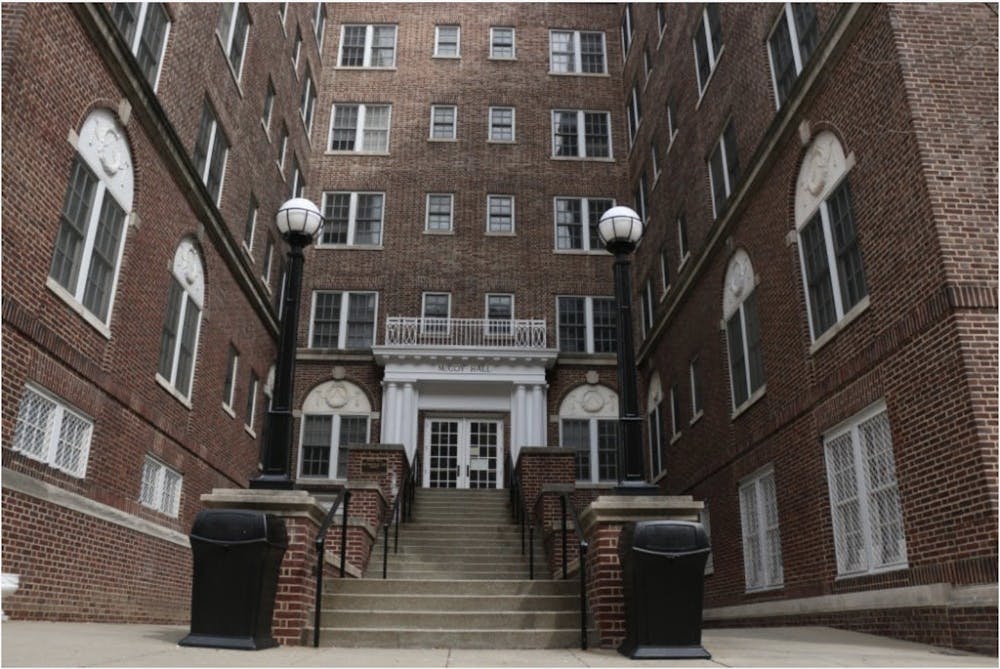The University administration is currently considering many possible plans regarding students returning to campus next fall given the novel coronavirus (COVID-19) pandemic.
A document written by Vice Provost and Chief Risk and Compliance Officer Jonathan Links and Executive Vice Provost for Academic Affairs Stephen Gange discusses the goals and challenges that the University faces in making a decision.
“JHU is committed to providing opportunities for every student to achieve their degree or certificate program requirements to the extent possible during the COVID-19 disruptions,” they wrote.
In an email to The News-Letter, the authors of the document emphasized that the University is committed to upholding its pre-COVID-19 goals.
“Our core mission remains unchanged, even in a changed environment: To educate our students and cultivate their capacity for lifelong learning, to foster independent and original research, and to bring the benefits of discovery to the world,” they wrote.
However, the authors noted that the University would take into consideration guidance from public health experts and available scientific data before bringing students back to campus.
Links and Gange made clear that if students return in the fall, life on campus would not resume its pre-COVID-19 state. They outlined the conditions that would need to be met in order to ensure a healthy campus. These conditions include the availability of rapid testing, mass non-contact temperature-taking on a daily basis, masks being worn universally, frequent facility sanitation and strict adherence to social distancing guidelines.
The authors also highlighted the challenges the University will encounter trying to adhere to these guidelines. The University would have to limit the enrollment limit for large courses, and seating in lecture halls would have to allow each student to keep a six-foot radius from others. Additionally, there is the question of what to do with at-risk faculty members, such as those older than 60 or with preexisting health conditions.
Links and Gange proposed alternate plans for the fall semester that do not include all students returning to campus.
“Given that JHU commits to finding a way for all currently-enrolled students to complete their programs, including students who are overseas and cannot get back to the U.S. because of visa and travel restrictions, it is likely that some online options will be necessary regardless of if-and-how on-campus activities resume,” they wrote.
The University faces an additional challenge in bringing undergraduate students back to campus as the dorm-style living required of freshman and sophomore students is not conducive to social distancing. Additionally, dining halls would have to adjust to social distancing specifications, as well as increase their sanitation frequency.
“Perhaps the greatest challenge is in thinking through our freshman and sophomore residential program,” the authors wrote in their email.
The authors wrote that given these concerns, there is the potential for undergraduate students to begin the fall semester online while buildings on the Homewood Campus are used to house graduate programs; the extra buildings would be useful in getting graduate programs back in person sooner because they give the students and faculty more space to social distance.
Links and Gange also assessed the possibility of having incoming freshmen defer their in-person instruction until late fall or the beginning of their second semester, while upperclassmen would be allowed to return to campus earlier.
Continuing remote learning would also bring challenges to the University. International students, for example, will be living and learning from time zones that do not coincide with Baltimore’s. Additionally, the University needs to account for students whose homes do not have internet access or have family responsibilities such that online learning is not possible from their homes.
In their email, the Links and Gange clarified that on-campus research may recommence before in-person teaching and learning.
“We don’t think of these different activities as having different priorities, because we think they are all equally critical,” Links and Gange wrote to The News-Letter. “However, in terms of the challenges we face in increasing on-campus activities, we think resuming more research is the easiest to address, and thus will likely happen the soonest.”
The authors noted that bringing activity back to campus will help address the financial struggles detailed in an email from University President Ronald J. Daniels to the student body earlier this month.
“The university’s poorer-than-budgeted and anticipated financial status is the direct result of a reduction in on-campus activities, including clinical activities, but also residential programs,” they wrote. “That means that to the extent we can resume on-campus activities, we actually begin to mitigate the financial impacts.”
The authors note that these options were decided upon based on the American Enterprise Institute's (AEI) National coronavirus response: A road map to reopening. The AEI report posits that by late summer, Maryland’s stay-at-home order will have been lifted gradually, and COVID-19 testing capacity will have increased in the state. Meeting these conditions is critical to the above-mentioned action plans becoming reality.
Links and Gage highlighted that the University’s status in the sphere of public health puts it in an optimal position to create plans for the future.
“We are lucky to have world-class schools of medicine and public health and are closely collaborating with our own experts here,” the authors wrote. “All of this has contributed to a planning effort that puts us ahead of many other universities, who have been using us as a model in many cases.”
Correction: The original version of this article, without basis, implied that if upperclassmen only were allowed to return to campus, they could reside in freshman dorm buildings.
The News-Letter regrets this error.





